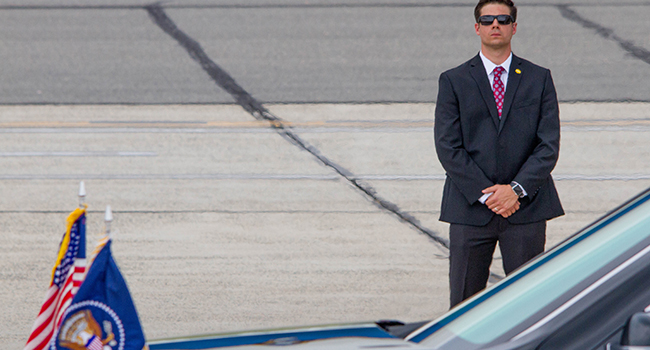
New Secret Service Pins to Include Security Feature
The document says the Secret Service contacted three other vendors, but none were able to “provide the expertise in manufacturing lapel emblems with any type of security technology features.”
- By Jessica Davis
- Dec 04, 2018
The Secret Service is planning to award a contract for “specialized label emblem identification pins,” according to an acquisitions notice filed by the agency. Text in the purchasing document indicated that the lapel pins will include some security technology.
The Secret Service is ordering the batch of lapel pins from a company called V.H. Blackinton & Co., Inc., which primarily makes badges for police departments. According to the purchasing document, Blackinton & Co. “is the sole proprietor that has the expertise in manufacturing lapel emblems that have new security enhancement technology feature [redacted].”
Additionally, the document says the Secret Service contacted three other vendors, but none were able to “provide the expertise in manufacturing lapel emblems with any type of security technology features.”
Blackinton’s COO told Quartz over email that the company is “We are not in a position to share any of that information.” However, product offerings on Blackinton’s website may point toward what kind of technology the lapel pins may include, such as the SmartShield, a patented authentication technology offered only by Blackinton. The SmartShield contains a tiny RFID transponder chip that connects to an agency database, which lists all the information required to verify a badge carrier’s authorization to hold it and that the badge itself is real.
Other security features offered by Blackinton include color-shifting enamel, scannable QR tags and tamper-proof numerical codes that are embedded and show up under UV light.
The Secret Service requires strict security for lapel pin manufacturing. Everyone working on lapel pins for the agency must pass a background check and be a citizen of the U.S. At the end of each workday, all tools and dies used in pin creation are turned back into the Secret Service, and any unused blanks are returned to the agency when the work is completed. The work must take place in a restricted area, either “a secure room, a wire cage, or a roped- or condoned-off area.”
According to Blackinton, its workplace entrances and exits all have video surveillance and 24/7, third-party alarm monitoring. The company also states that its facility has been “inspected and approved” by the Secret Service.
About the Author
Jessica Davis is the Associate Content Editor for 1105 Media.